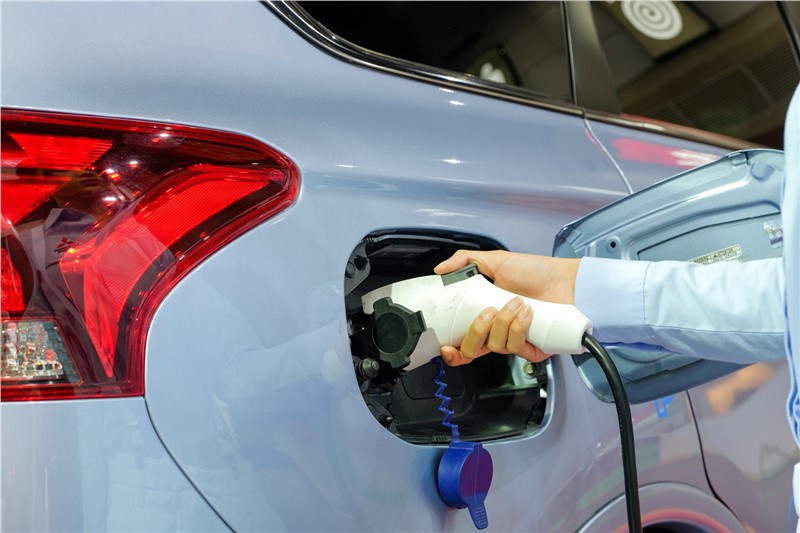Tuesday 4 October 2022, Amsterdam

The automotive sector has undergone a significant transformation in terms of technological advancement in recent years. Due to their output efficiency and lightweight nature, electrical components are being used by OEMs to meet evolving consumer needs, making vehicle electrification a fuel-efficient option. Additionally, since hazardous greenhouse gases are emitted by car emissions, raising environmental and health issues, this is a significant factor. As a result, governments all over the world are enforcing automobile emission standards to limit greenhouse gas emissions and preserve the ecological balance. These rules must be followed by manufacturers if they want to regulate the emission level. For instance, the Government of India established the BS6 emission standard in April 2020 to curb vehicle emissions of air pollutants.
Additionally, end users/drivers are seeking technologically improved electrical systems and components to improve the driving experience and enable the vehicle to operate efficiently. Therefore, the need for vehicle electrification in the near future is increased by all of these considerations taken together.
How has COVID-19 had a Significant Negative Impact on the Auto Electrification Market?
The current COVID-19 health catastrophe has already had an even stronger negative impact on the global economy than the 2008 economic recession. The total decline brought on by the epidemic appears to be more parallel or versed than when it was roughly -1 percent. The world economy was projected by the International Monetary Fund (IMF) to contract by less than 3%, which will have an impact on all global trade.
Uncertainty surrounds the COVID's effect on the auto electrification sector, which is anticipated to last into the second quarter of 2021. The global coronavirus outbreak has compelled the central government to issue directives to safeguard worker safety and to stop the virus's spread.
Reduction in Battery Prices per KWH
The important component of the car that provides the electricity input to the numerous electrical parts that are needed for efficient operation is the battery. The need for car batteries is anticipated to increase as electrical components become more widely used in the vehicle industry. Additionally, as electrical components are integrated into cars more and more, there is a greater demand for automotive batteries, which supports the expansion of the auto electrification market. Additionally, the cost of automobile batteries is falling dramatically.
For instance, an analysis of automotive battery prices by Bloomberg New Energy Finance (BNEF) found that in 2010 they were $1,100 per kWh and in 2019 they were $156 per kWh. Furthermore, it is anticipated that these costs will continue to decline in the next few years, supporting the market for auto electrification.
Increased Demand for 48V Design
Worldwide acceptance of 48 V architecture and mild hybrids is growing quickly, which is projected to increase demand for electrifying vehicles in the near future. Compared to mild hybrid vehicles, full hybrid vehicles offer superior fuel efficiency. The International Council on Clean Transportation estimates that the fuel consumption of complete hybrid vehicles is reduced by 30-35 percent. However, true hybrid vehicle producers face significant difficulties due to issues like the heavier weight and greater cost of automobiles. Although they are less efficient than full hybrid systems, mild hybrid systems using a 48 V battery are more affordable. As a result, OEMs favour the mild hybrid idea. This entails using an ordinary ICE engine and adding an electric motor with a maximum power of 15 kW. In this the electric motor is the only cost addition, which is offset by the removal of the starter motor and alternator from the conventional ICE engine.
Commercial Vehicle Electrification
Buses and trucks are utilised for logistical and public transportation all over the world. Public transit is utilised more frequently than private transportation in Europe, Asia, and Oceania. While in North America, private automobiles are the main mode of transportation. The increasing population in metropolitan areas, where the current transportation infrastructure is proving to be inadequate, is what drives the demand for public transit. Each OEM is now emphasising lowering the carbon footprint on the planet and encouraging the usage of electric vehicles. Taxis and passenger cars are putting more emphasis on cleaner technologies as the trend toward mobility on demand grows. Passenger automobiles are the focus of the majority of work in the field of auto electrification. There are extremely few commercial electrical systems and components available.
Increased Electrification of Fleets and Commercial Vehicles
It is critically necessary to reduce carbon emissions to an effective level in order to preserve the ecological equilibrium. End users are gravitating toward green mobility because of its fuel-efficient solution and environmentally friendly output. There is a desire for simpler and quicker local travel solutions due to the rapid urbanisation pace. Many governments have recently shifted toward green transportation and modifications to electrically powered buses. Additionally, industry participants are aligning their product lines to meet the demand for electrification in the next few years. In the upcoming years, it is anticipated that these modifications to local commutes is projected to promote the expansion of car electrification.

ASDReports.com contact: S. Koomen
ASDReports.com / ASDMedia BV - Veemkade 356 - 1019HD Amsterdam - The Netherlands
P : +31(0)20 486 1286 - F : +31(0)20 486 0216